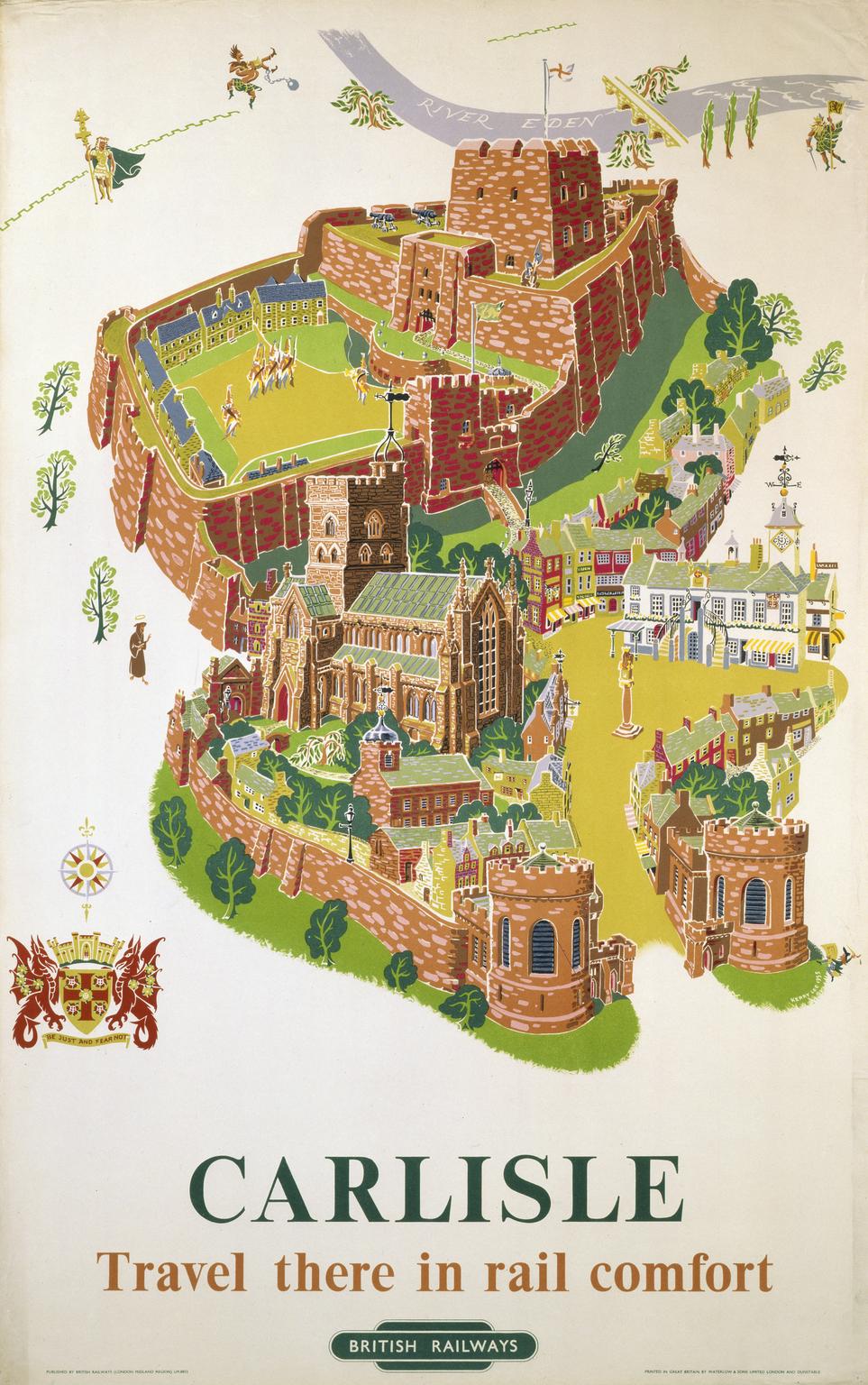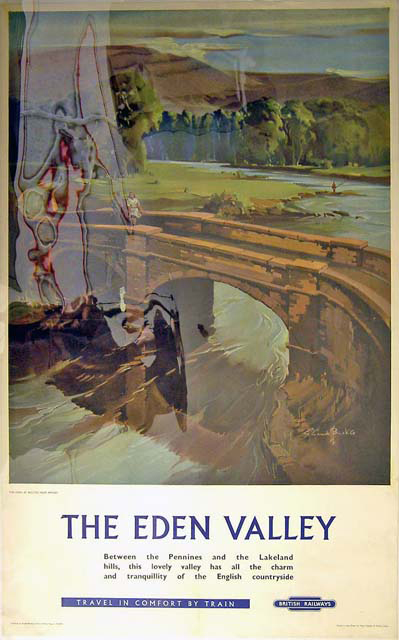Posters have been used to promote Britain's railways since the introduction of passenger services in the 1830s.
For the first few decades, railway posters were relatively simple affairs. Most were text only, printed in just one or two colours on a plain background. If images were used, they were typically just single colour woodcuts. The primary purpose of these early posters was to provide factual information. Two forms were common: simple announcements (e.g. a few short sentences to promote a new service) and detailed information sheets (e.g. timetables & sample fares).
Around the turn of the 19th century, technological advances made full-colour printing an affordable option. A few pioneering companies commissioned artists & designers (rather than traditional printers) to create bold & attractive posters that would stand-out from the crowd. Then as now, the key objective was to create posters that would draw the eye, then convey their marketing message from a distance both quickly and memorably. London Transport and the Midland Railway (MR) were among the early adopters of this new artform, but some of the other mainline railway companies were relatively slow to follow suit.
After the Grouping of 1923, the London Midland & Scottish Railway (LMS) made extensive use of visually striking posters to promote opportunities for tourism & leisure travel via its extensive network. The trend continued into the British Railways & British Rail (BR) eras, but artist-generated illustrations were gradually replaced by photographs, moving images and celebrity endorsements.
In modern times, electronic displays have replaced paper & ink in many locations. However, old railway travel posters can still evoke an emotional response, even when displayed on screens. This is especially true for people who remember seeing these posters in their original setting: on railway stations, perhaps while planning (or commencing) a journey to somewhere new & exciting.
Image Gallery
The image gallery below contains seven examples from the online collection of the Science Museum Group. These images are shared under the CC BY-NC-SA 4.0 Licence: https://creativecommons.org/licenses/by-nc-sa/4.0/.
Image 1
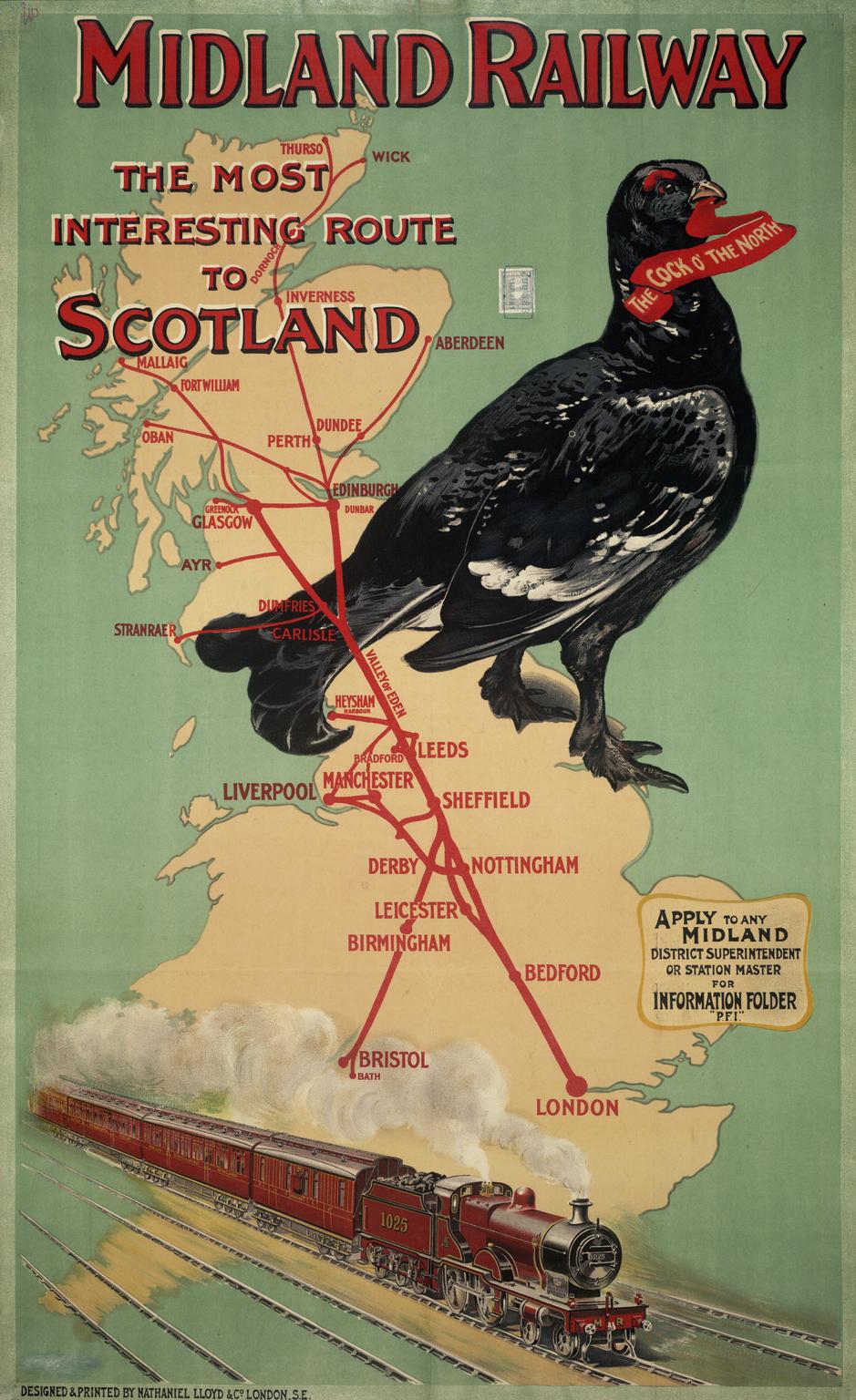
Midland Railway / the most interesting route to Scotland
Object Number: 1999-7966
Image 2
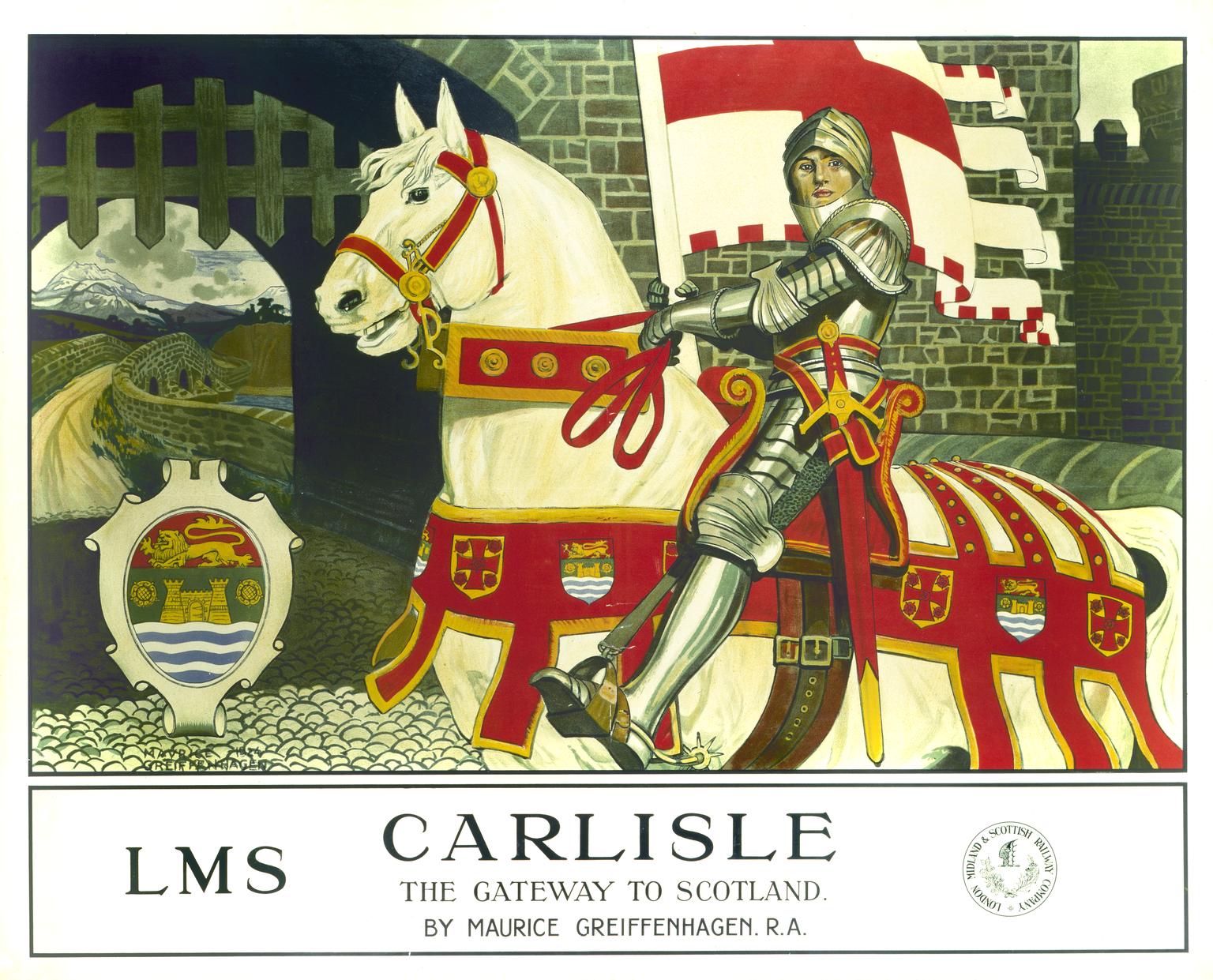
LMS / Carlisle / The Gateway to Scotland, / by Maurice Greiffenhagen R.A.
Object Number: 1978-9120
Image 3
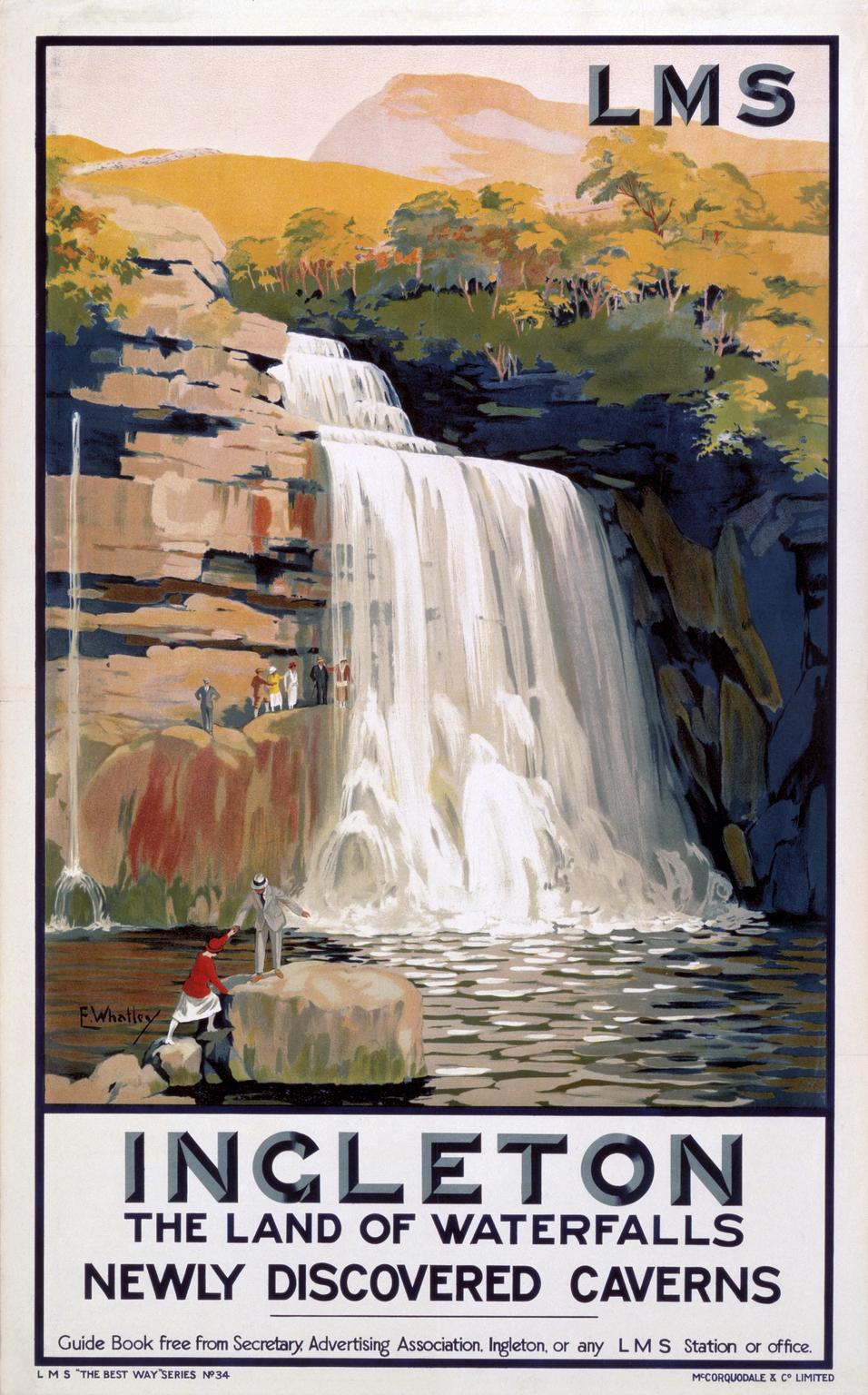
Ingleton / The Land of Waterfalls / Newly discovered caverns
Object Number: 1988-7964
Image 4
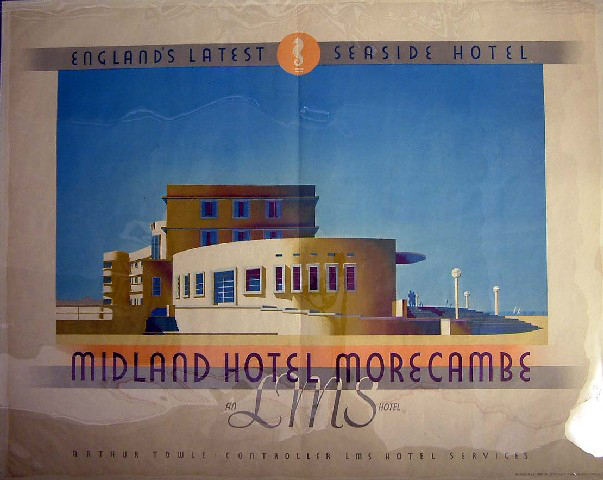
England's latest seaside hotel / Midland Hotel Morecambe / an LMS Hotel
Object Number: 1986-9099
Footnote 1
The full text reads:
Settle-Carlisle Line
How long has it been since you were moved to write great poetry or paint beautiful pictures?
When did you last glimpse fields of grazing cattle from the windows of a hurrying train?
And when last, did you course through mountains, cross rivers and dales?
When were you last transported high into the air to gaze down from majestic viaducts? Or pause for thought at England's highest station?
And how long is it since you marvelled at the most breathtaking countryside in all England?
When did you last take the train from Settle to Carlisle?
Further reading & useful links
For additional information relating to the posters in the image gallery above, search for the relevant 'Object Number' in the Science Museum Group's online collection catalogue at:
https://collection.sciencemuseumgroup.org.uk/
For additional examples of railway posters and / or additional information about the history, development, artistic merits and social history aspects of British railway travel posters, see:
- Art Matters podcast: the art of twentieth-century British railway posters
https://artuk.org/discover/stories/art-matters-podcast-the-art-of-twentieth-century-british-railway-posters - Independent (newspaper): The joy of the adventurous railway poster
https://www.independent.co.uk/arts-entertainment/art/railway-posters-criccieth-great-western-railways-filey-jersey-scarborough-rhuddlan-southern-railway-the-forth-bridge-north-east-dales-kent-st-ives-cornwall-a8071746.html - Science Museum Group online collection: Railway posters, notices and handbills
https://collection.sciencemuseumgroup.org.uk/search/images/categories/railway-posters,-notices-&-handbills - University of the Arts London: Railway Lithography (posters)
https://bagdcontext.myblog.arts.ac.uk/2011/09/16/railway-lithography-posters/ - Victoria and Albert Museum, Selling the seaside - British holiday posters
https://www.vam.ac.uk/articles/selling-the-seaside-british-holiday-posters - Simmons, Jack & Biddle, Gordon: "The Oxford Companion to British Railway History", Oxford University Press (1997), entry for 'posters' on pages 390-391.
- Frost, Lorna: "Railway Posters", Bloomsbury Publishing (2012).

